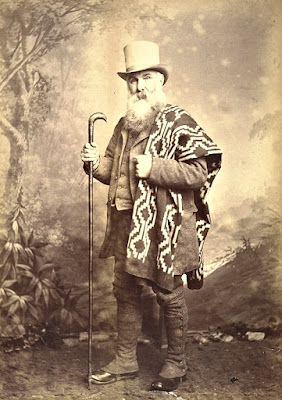Urraca (April 1079 – 8 March 1126) called the Reckless (la Temeraria),[1] was Queen of León, Castile, and Galicia from 1109 until her death. She claimed the imperial title as suo jure Empress of All Spain[2] and Empress of All Galicia.[
The most famous proponents of independence were Gonzalo Peláez and Queen Urraca, who, while achieving significant victories, were ultimately defeated by Castilian troops. After its integration into the Kingdom of Spain, Asturias provided the Spanish court with high-ranking aristocrats and played an important role in the colonisation of America. Since 1388, the heir to the Castilian (later Spanish) throne has been styled Prince of Asturias. In the 16th century, the population reached 100,000 for the first time, and within another century that number would double due to the arrival of American corn.
The Astures were subdued by the Romans but were never fully conquered. After several centuries without foreign presence, they enjoyed a brief revival during the Germanic invasions of the late 4th century AD, resisting Suebi and Visigoth raids throughout the 5th Century AD, ending with the Moorish invasion of Spain. However, as it had been for the Romans and Visigoths, the Moors did not find mountainous territory easy to conquer, and the lands along Spain's northern coast never fully became part of Islamic Spain. Rather, with the beginning of the Moorish conquest in the 8th century, this region became a refuge for Christian nobles, and in 722, a de facto independent kingdom was established, the Regnum Asturorum, which was to become the cradle of the incipient Reconquista (Reconquest).
As their relationship soured, Urraca accused Alfonso of physical abuse, and by May 1110 she separated from Alfonso. In addition to her objections to Alfonso's handling of rebels, the couple had a falling-out over his execution of one of the rebels who had surrendered to the queen, to whom the queen was inclined to be merciful. Additionally, as Urraca was married to someone many in the kingdom objected to, the queen's son and heir became a rallying point for opponents to the marriage.
Estrangement between husband and wife escalated from discrete and simmering hostilities into open armed warfare between the Leonese-Castilians and the Aragonese. An alliance between Alfonso of Aragon and Henry of Portugal culminated in the 1111 Battle of Candespina in which Urraca's lover and chief supporter Gómez González was killed. He was soon replaced in both roles by another count, Pedro González de Lara, who took up the fight and would father at least two further children by Urraca: a daughter, Elvira Pérez de Lara (c.1112-1174), who would wed twice, first to García Pérez de Traba, lord of Trastámara and son of Pedro Fróilaz de Traba, then to count Beltrán de Risnel, and a son, Fernando Pérez Hurtado (c.1114-1156). By the fall of 1112 a truce was brokered between Urraca and Alfonso with their marriage annulled. Though Urraca recovered Asturias, Leon, and Galicia, Alfonso occupied a significant portion of Castile (where Urraca enjoyed large support), while her half-sister Theresa and her husband Count Henry of Portugal occupied Zamora and Extremadura. Recovering these regions and expanding into Muslim lands would occupy much of Urraca's foreign policy. Despite the annulment of their marriage (on the grounds of consanguinity), Alfonso continued his efforts for political control.[9] While Urraca was engaged in this battle, she also had to contend with the schemes of her sister, who promoted a plan to replace the queen by her son. This particular incident, ended in a compromise between the two sisters where Theresa was granted a vast territory in Leon in exchange for agreeing that she was Urraca's vassal. .


Urraca of León and Castile 1079-1126
ReplyDelete26th great-grandmother
Alfonso VII of León and Castile 1105-1157
Son of Urraca of León and Castile
Sancho III Alfonsez CASTILE LEON 1134-1158
Son of Alfonso VII of León and Castile
Alphonso VIII The Noble of Castille 1155-1214
Son of Sancho III Alfonsez CASTILE LEON
Blanca Alfonsez of Castile 1188-1253
Daughter of Alphonso VIII The Noble of Castille
Charles I of Naples King of Sicily 1226-1285
Son of Blanca Alfonsez of Castile
Charles of Naples 1254-1309
Son of Charles I of Naples King of Sicily
Marguerite Sicily and Hungary Countess Anjou 1274-1299
Daughter of Charles of Naples
Jeanne De Valois 1295-1342
Daughter of Marguerite Sicily and Hungary Countess Anjou
Countess Catherine deAvesnes Hainault 1315-1375
Daughter of Jeanne De Valois
Katherine or Catherine Duchess of Lancaster Roet Swynford 1350-1403
Daughter of Countess Catherine deAvesnes Hainault
Joan Countess Westmoreland De Beaufort 1375-1440
Daughter of Katherine or Catherine Duchess of Lancaster Roet Swynford
Edward Neville, 3rd Baron Bergavenny
Son of Joan Countess Westmoreland De Beaufort
George Neville, 4th Baron Bergavenny
Son of Edward Neville, 3rd Baron Bergavenny
Edward Neville, Baron Bergavenny 1500-1538
Son of George Neville, 4th Baron Bergavenny
Edward Neville Baron Bergavenny 1518-1589
Son of Edward Neville, Baron Bergavenny
Edward Neville 8th Baron of Bergavenny 1551-1622
Son of Edward Neville Baron Bergavenny
John Neville 1612-1664
Son of Edward Neville 8th Baron of Bergavenny
Rachel Neville 1658-1734
Daughter of John Neville
Johannah Ashford Gilbert 1700-1733
Daughter of Rachel Neville
Michael Gash Sr 1728-1810
Son of Johannah Ashford Gilbert
Michael Gash Jr 1758-1826
Son of Michael Gash Sr
James D Gash 1793-1835
Son of Michael Gash Jr
John Gash 1822-1896
Son of James D Gash
William Sterling Gash 1852-1915
Son of John Gash
Jesse Franklin Gash 1877-1964
Son of William Sterling Gash
Clarence Jesse Gash 1909-1966
Son of Jesse Franklin Gash
Everette Milo Gash 1940-2003
Son of Clarence Jesse Gash
Mark Rein Gash
You are the son of Everette Milo Gash